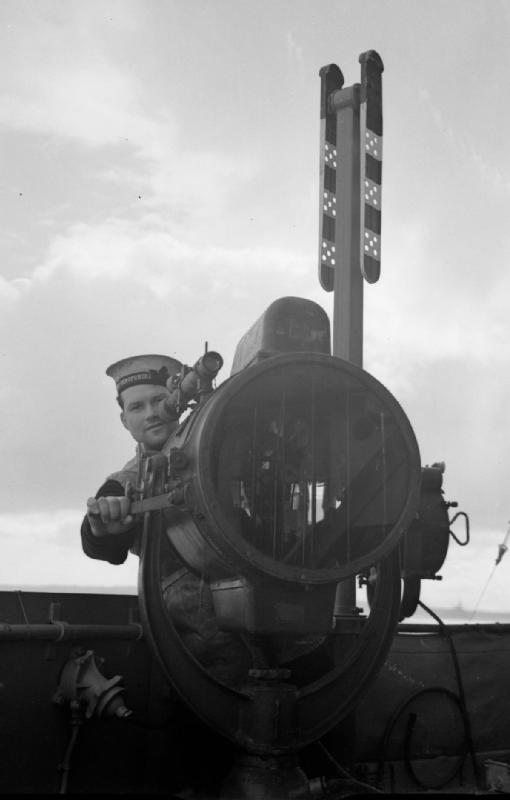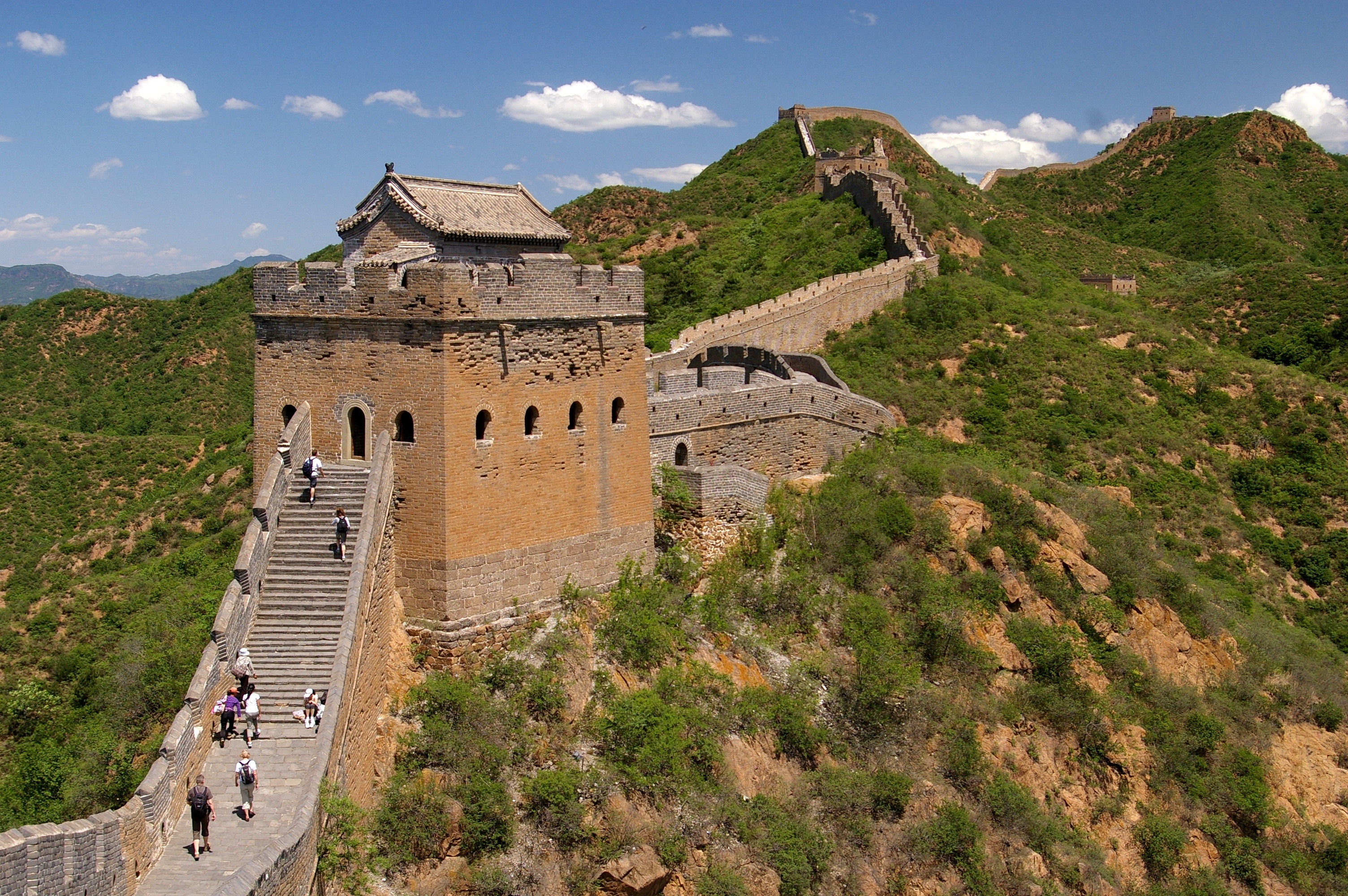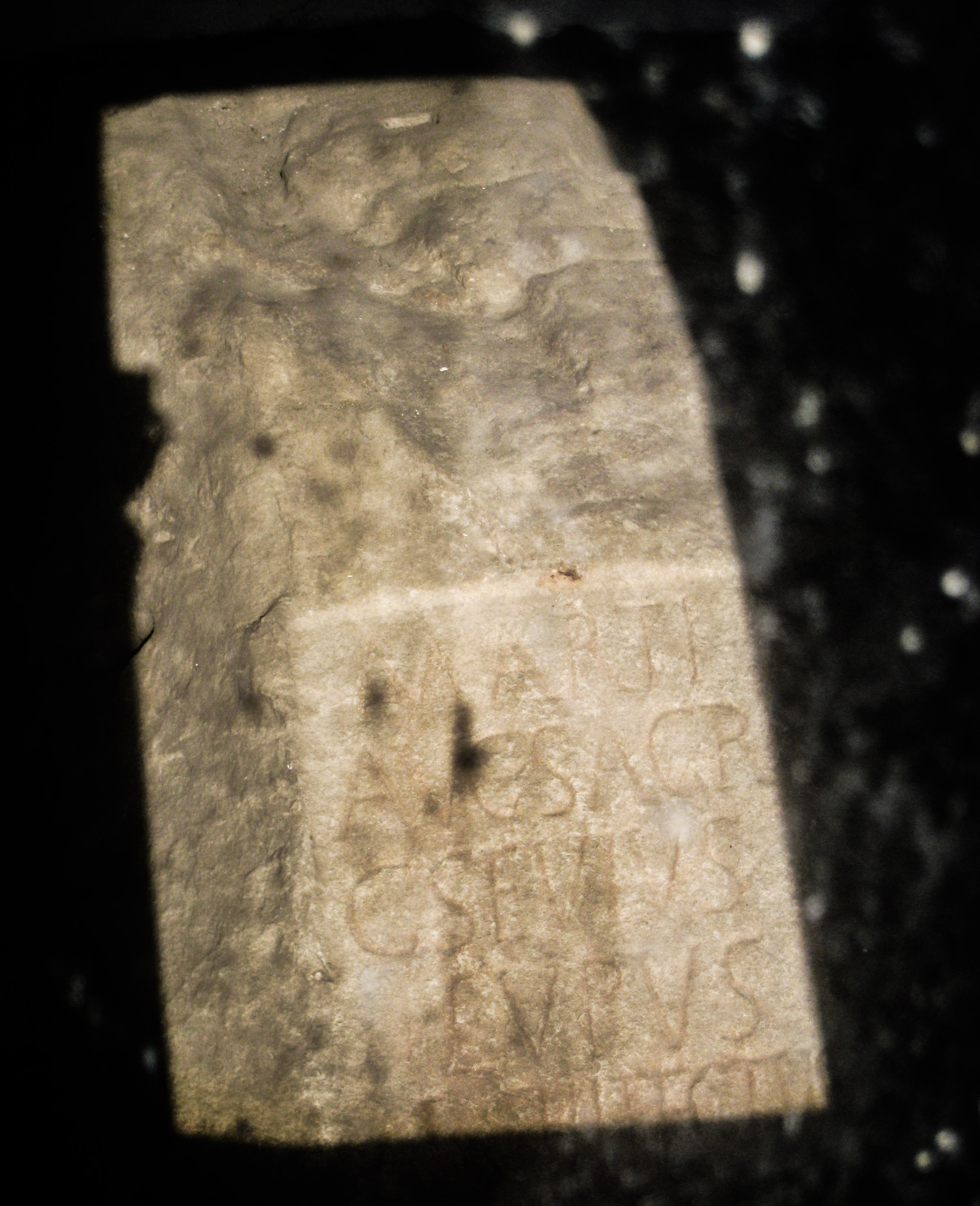|
Semaphore
Semaphore (; ) is the use of an apparatus to create a visual signal transmitted over distance. A semaphore can be performed with devices including: fire, lights, flags, sunlight, and moving arms. Semaphores can be used for telegraphy when arranged in visually connected networks, or for traffic signalling such as in railway systems, or traffic lights in cities. Fire The Phryctoriae were a semaphore system used in Ancient Greece for the transmission of specific prearranged messages. Towers were built on selected mountaintops, so that one tower, the ''phryctoria'', would be visible to the next tower, usually twenty-miles distant. Flames were lit on one tower, then the next tower would light a flame in succession. The Byzantine beacon system was a semaphore developed in the 9th century during the Arab–Byzantine wars. The Byzantine Empire used a system of beacons to transmit messages from the border with the Abbasid Caliphate across Asia Minor to the Byzantine capital, C ... [...More Info...] [...Related Items...] OR: [Wikipedia] [Google] [Baidu] |
Optical Telegraph
An optical telegraph is a line of stations, typically towers, for the purpose of conveying textual information by means of visual signals. There are two main types of such systems; the semaphore telegraph which uses pivoted indicator arms and conveys information according to the direction the indicators point, and the shutter telegraph which uses panels that can be rotated to block or pass the light from the sky behind to convey information. The most widely used system was invented in 1792 in France by Claude Chappe, and was popular in the late eighteenth to early nineteenth centuries. This system is often referred to as ''semaphore'' without qualification. Lines of relay towers with a semaphore rig at the top were built within line of sight of each other, at separations of . Operators at each tower would watch the neighboring tower through a telescope, and when the semaphore arms began to move spelling out a message, they would pass the message on to the next tower. This sy ... [...More Info...] [...Related Items...] OR: [Wikipedia] [Google] [Baidu] |
Railway Semaphore Signal
Railway semaphore signal is one of the earliest forms of fixed railway signals. This semaphore system involves signals that display their different indications to train drivers by changing the angle of inclination of a pivoted 'arm'. Semaphore signals were patented in the early 1840s by Joseph James Stevens, and soon became the most widely used form of mechanical signal. Designs have altered over the intervening years, and colour light signals have replaced semaphore signals in most countries, but in a few they remain in use. Origins The first railway semaphore signal was erected by Charles Hutton Gregory on the London and Croydon Railway (later the London Brighton and South Coast Railway) at New Cross, southeast London, about 1842 on the newly enlarged layout also accommodating the South Eastern Railway. John Urpeth Rastrick claimed to have suggested the idea to Hutton Gregory. The semaphore was afterwards rapidly adopted as fixed manual signals throughout Britain and t ... [...More Info...] [...Related Items...] OR: [Wikipedia] [Google] [Baidu] |
Telegraphy
Telegraphy is the long-distance transmission of messages where the sender uses symbolic codes, known to the recipient, rather than a physical exchange of an object bearing the message. Thus flag semaphore is a method of telegraphy, whereas pigeon post is not. Ancient signalling systems, although sometimes quite extensive and sophisticated as in China, were generally not capable of transmitting arbitrary text messages. Possible messages were fixed and predetermined and such systems are thus not true telegraphs. The earliest true telegraph put into widespread use was the optical telegraph of Claude Chappe, invented in the late 18th century. The system was used extensively in France, and European nations occupied by France, during the Napoleonic era. The electric telegraph started to replace the optical telegraph in the mid-19th century. It was first taken up in Britain in the form of the Cooke and Wheatstone telegraph, initially used mostly as an aid to railway signalling ... [...More Info...] [...Related Items...] OR: [Wikipedia] [Google] [Baidu] |
Flag
A flag is a piece of fabric (most often rectangular or quadrilateral) with a distinctive design and colours. It is used as a symbol, a signalling device, or for decoration. The term ''flag'' is also used to refer to the graphic design employed, and flags have evolved into a general tool for rudimentary signalling and identification, especially in environments where communication is challenging (such as the maritime environment, where semaphore is used). Many flags fall into groups of similar designs called flag families. The study of flags is known as " vexillology" from the Latin , meaning "flag" or "banner". National flags are patriotic symbols with widely varied interpretations that often include strong military associations because of their original and ongoing use for that purpose. Flags are also used in messaging, advertising, or for decorative purposes. Some military units are called "flags" after their use of flags. A ''flag'' (Arabic: ) is equivalent to a b ... [...More Info...] [...Related Items...] OR: [Wikipedia] [Google] [Baidu] |
Phryctoriae
Phryctoria ( el, φρυκτωρία) was a semaphore system used in Ancient Greece. The ''phryctoriae'' were towers built on selected mountaintops so that one tower (''phryctoria'') would be visible to the next tower (usually 20 miles away). The towers were used for the transmission of a specific prearranged message. Flames were lit on one tower and then the next tower in succession also lit flames. In Aeschylus tragedy ''Agamemnon'', a slave watchman character learns the news of Troy's fall from Mycenae by carefully watching a fire beacon. Thucydides wrote that during the Peloponnesian War, the Peloponnesians who were in Corcyra were informed by night-time beacon signals of the approach of sixty Athenian vessels from Lefkada. Phryctoriae and Pyrseia Ιn the 2nd century BC, the Greek engineers from Alexandria, Cleoxenes ( el, Κλεόξενος) and Democletus ( el, Δημόκλειτος) invented the pyrseia ( el, πυρσεία). Πυρσεία from πυρσός which means ... [...More Info...] [...Related Items...] OR: [Wikipedia] [Google] [Baidu] |
Signal Lamp
Signal lamp training during World War II A signal lamp (sometimes called an Aldis lamp or a Morse lamp) is a semaphore system using a visual signaling device for optical communication, typically using Morse code. The idea of flashing dots and dashes from a lantern was first put into practice by Captain Philip Howard Colomb, of the Royal Navy, in 1867. Colomb's design used limelight for illumination, and his original code was not the same as Morse code. During World War I, German signalers used optical Morse transmitters called ', with a range of up to 8 km (5 miles) at night, using red filters for undetected communications. Modern signal lamps produce a focused pulse of light, either by opening and closing shutters mounted in front of the lamp, or by tilting a concave mirror. They continue to be used to the present day on naval vessels and for aviation light signals in air traffic control towers, as a backup device in case of a complete failure of an aircraft's radio. ... [...More Info...] [...Related Items...] OR: [Wikipedia] [Google] [Baidu] |
Traffic Light
Traffic lights, traffic signals, or stoplights – known also as robots in South Africa are signalling devices positioned at road intersections, pedestrian crossings, and other locations in order to control flows of traffic. Traffic lights consist normally of three signals, transmitting meaningful information to drivers and riders through colours and symbols including arrows and bicycles. The regular traffic light colours are red, yellow, and green arranged vertically or horizontally in that order. Although this is internationally standardised,1968, as revised 1995 and 2006Vienna Convention on Road Signs and Signals United Nations Publication ECE/TRANS/196. ISBN 978-92-1-116973-7. URL Accessed: 7 January 2022. variations exist on national and local scales as to traffic light sequences and laws. The method was first introduced in December 1868 on Parliament Square in London to reduce the need for police officers to control traffic. Since then, electricity and computerised ... [...More Info...] [...Related Items...] OR: [Wikipedia] [Google] [Baidu] |
Byzantine Beacon System
In the 9th century, during the Arab–Byzantine wars, the Byzantine Empire used a semaphore system of beacons to transmit messages from the border with the Abbasid Caliphate across Asia Minor to the Byzantine capital, Constantinople. According to the Byzantine sources (Constantine Porphyrogenitus, Theophanes Continuatus and Symeon Magister), the line of beacons began with the fortress of Loulon, on the northern exit of the Cilician Gates, and continued with Mt. Argaios (identified mostly with Keçikalesı on Hasan Dağı, but also with Erciyes Dağı near Caesarea), Mt. Samos or Isamos (unidentified, probably north of Lake Tatta), the fortress of Aigilon (unidentified, probably south of Dorylaion), Mt. Mamas (unidentified, Constantine Porphyrogenitus has Mysian Olympus instead), Mt. Kyrizos (somewhere between Lake Ascania and the Gulf of Kios, possibly Katerlı Dağı according to W. M. Ramsay), Mt. Mokilos above Pylae on the southern shore of the Gulf of Nicomedia (iden ... [...More Info...] [...Related Items...] OR: [Wikipedia] [Google] [Baidu] |
Coast Telegraph, Semaphore Or Signaling Post At Scheveningen, 1799
The coast, also known as the coastline or seashore, is defined as the area where land meets the ocean, or as a line that forms the boundary between the land and the coastline. The Earth has around of coastline. Coasts are important zones in natural ecosystems, often home to a wide range of biodiversity. On land, they harbor important ecosystems such as freshwater or estuarine wetlands, which are important for bird populations and other terrestrial animals. In wave-protected areas they harbor saltmarshes, mangroves or seagrasses, all of which can provide nursery habitat for finfish, shellfish, and other aquatic species. Rocky shores are usually found along exposed coasts and provide habitat for a wide range of sessile animals (e.g. mussels, starfish, barnacles) and various kinds of seaweeds. Along tropical coasts with clear, nutrient-poor water, coral reefs can often be found between depths of . According to a United Nations atlas, 44% of all people live within 5 km (3.3mi) ... [...More Info...] [...Related Items...] OR: [Wikipedia] [Google] [Baidu] |
Smoke Signal
The smoke signal is one of the oldest forms of long-distance communication. It is a form of visual communication used over a long distance. In general smoke signals are used to transmit news, signal danger, or to gather people to a common area. History and usage In ancient China, soldiers along the Great Wall sent smoke signals on its beacon towers to warn one another of enemy invasion. The colour of the smoke communicated the size of the invading party. By placing the beacon towers at regular intervals, and situating a soldier in each tower, messages could be transmitted over the entire 7,300 kilometres of the Wall. Smoke signals also warned the inner castles of the invasion, allowing them to coordinate a defense and garrison supporting troops. In ancient Sri Lanka, soldiers stationed on the mountain peaks would alert each other of impending enemy attack (from English people, Dutch people or Portuguese people) by signaling from peak to peak. In this way, they were able to t ... [...More Info...] [...Related Items...] OR: [Wikipedia] [Google] [Baidu] |
Tower Of Hercules
The Tower of Hercules ( es, Torre de Hércules) is the oldest existent lighthouse known. It has an ancient Roman origin on a peninsula about from the centre of A Coruña, Galicia, in north-western Spain. Until the 20th century, it was known as the Farum Brigantium. The Latin word ''farum'' is derived from the Greek Φάρος, ''Pharos'', for the Lighthouse of Alexandria. The structure stands tall and overlooks the North Atlantic coast of Spain. It was built in the 1st century and renovated in 1791. There is a sculpture garden featuring works by Pablo Serrano and . The Tower of Hercules is a National Monument of Spain, and has been a UNESCO World Heritage Site since 27 June 2009.UNESCO websiteof Hercules/ref> It is the second-tallest lighthouse in Spain, after the Faro de Chipiona. Construction and history The tower is known to have existed by the 1st century, built or perhaps rebuilt under Trajan, possibly on foundations following a design that was Phoenician in ori ... [...More Info...] [...Related Items...] OR: [Wikipedia] [Google] [Baidu] |
A Coruña
A Coruña (; es, La Coruña ; historical English: Corunna or The Groyne) is a city and municipality of Galicia, Spain. A Coruña is the most populated city in Galicia and the second most populated municipality in the autonomous community and seventeenth overall in the country. The city is the provincial capital of the province of the same name, having also served as political capital of the Kingdom of Galicia from the 16th to the 19th centuries, and as a regional administrative centre between 1833 and 1982, before being replaced by Santiago de Compostela. A Coruña is located on a promontory in the Golfo Ártabro, a large gulf on the Atlantic Ocean. It is the main industrial and financial centre of northern Galicia, and holds the headquarters of the Universidade da Coruña. A Coruña is a packed city, the Spanish city featuring the tallest mean-height of buildings, also featuring a population density of 21,972 inhabitants per square km of built land area. Name Origin Th ... [...More Info...] [...Related Items...] OR: [Wikipedia] [Google] [Baidu] |


.jpg)








